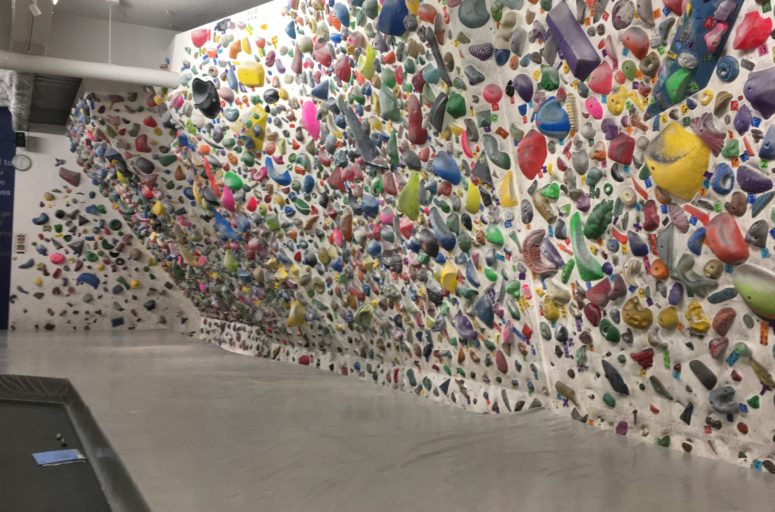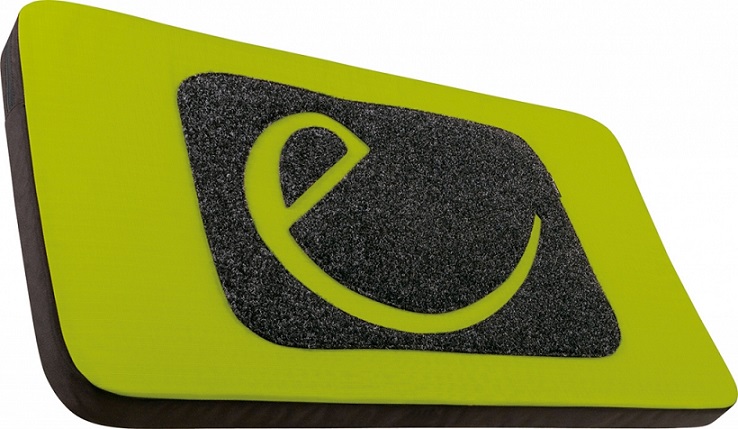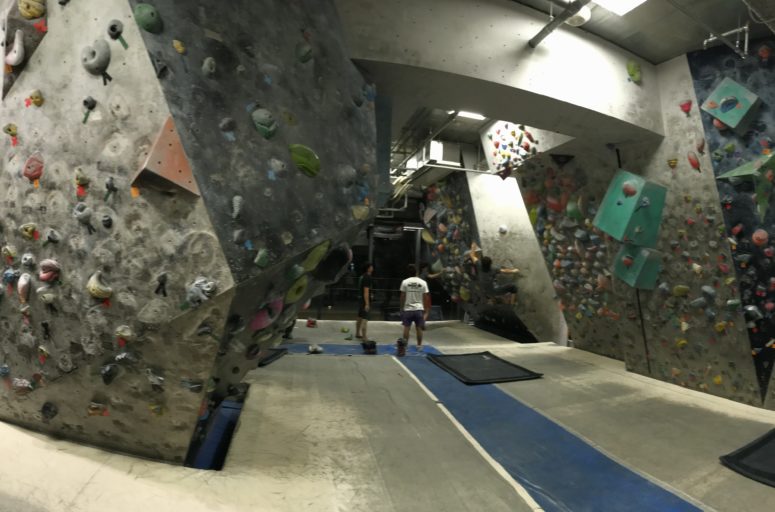Japan has always been keen on climbing, but a recent string of strong performances in competitive bouldering and climbing as well as the continued exploits of Dai Koyamada, Yuji Hirayama and Ashima Shiraishi has seen the sport garner a lot of interest, as Japan works its way to climbing’s first official Olympic debut in 2020. Unsurprisingly, Tokyo has seen a number of gyms spring up across the wider city area to profit from this trend. The T-Wall company runs 5 gyms around Tokyo. For this review, I visited the Shinbashi store to get in a little practice during my holiday.
The venue is located in the Shinbashi area South of Tokyo city centre and a few minutes’ walk from the Shimbashi Station Metro line. Well signed and next to a MiniMart convenience store, the wall is located underground and spans 8 wall faces up to around 5m high. Facilities include shoe and chalk bag rental, changing rooms, stretching area as well as phone charger outlets and free wifi. Clientele seems to be mostly the after work crowd.
Cost of entry is similar to other gyms in Tokyo, and you’ll need to register on your first entry (¥ 500). This registration fee gives you access to all the other T-Wall gyms which is a nice bonus. Check the detailed fee breakdown on their website but expect to play roughly ¥ 2000 per session.
The wall itself is plastered with brightly coloured grips. The more the merrier seems to be their moto, and there isn’t a single space unused. Starting from the beginner zones on the right the routes get progressively more difficult as the wall winds left to the advanced overhanging slabs. In terms of difficulty, routes are colour coded with tape labels to signify their relative difficulty level. To follow a route you either need to follow the numbered tapes (1, 2, 3…) or the alphabetical tapes (A, B, C…).
While I enjoyed the routes I tried, I found the sheer volume of grips and the labelling system very confusing. With too many grips, the wall turns into a training board and you’re prone to hitting or bumping into grips as you climb, or inadvertently stepping on other foot holds not on your route. Additionally, rather than using coloured grips for routes, as is mostly custom, the coloured tape solution means you often can’t see the tape as you climb and can be disorientating. As such, I can only recommend this hall for training purposes, those looking for something more straightforward and with more clearly defined boulder problems will need to find their fix elsewhere.


